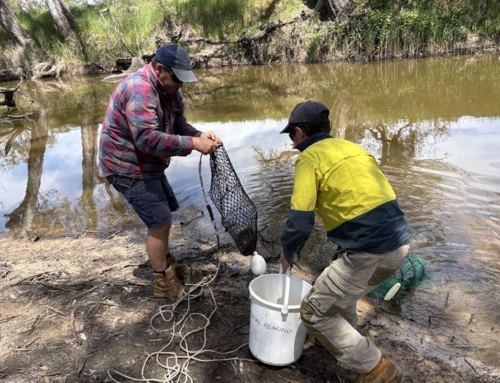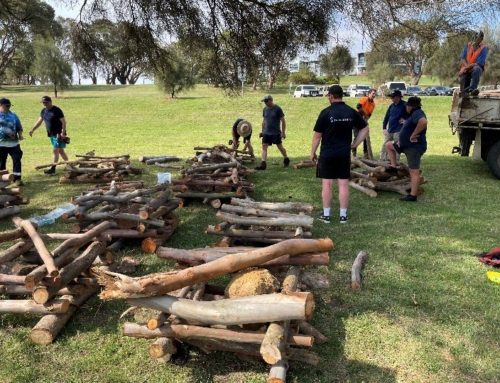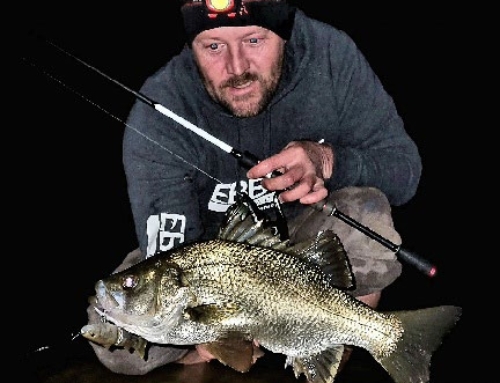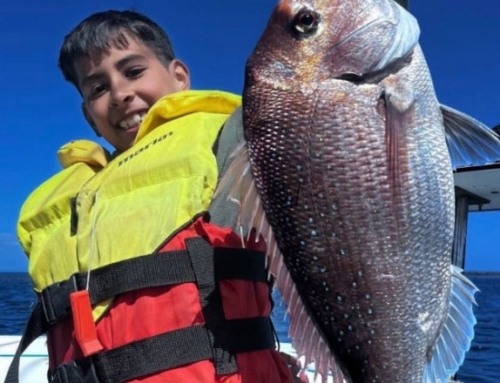Traditional bait fishing methods have proven effective for decades on Victoria’s snapper scene. Soft plastics have also come to the fore in recent times. Now it’s time for another type of lure to step into the limelight. Jarrod Day shares the reasons why vibes are the next big thing on Victoria’s snapper scene.
We are quite fortunate in Victoria when it comes to the variety of species on offer throughout the year but none are more predictable than the annual spawning migration of snapper.
When it comes to snapper it might be difficult to predict when they’ll come on the bite because of an easterly blow or a drop in barometric pressure; however, one thing’s for sure and that’s the fact you can bet your last dollar on the majority of the run schooling up on the bay reefs by September. Following on from that, they’ll be mooching around on the mud throughout late October through to mid-December and almost completely off the bite by Christmas Day.
Of course there are a few inconsistent bite periods throughout February and March before the majority of the fish head offshore but these challenging times force anglers to work out how to get them to feed which requires many more hours spent on the water for fewer fish.

Straight from the box, 70mm-90mm vibes are snapper ready. Built with tough hardware, they are a proven deadly lure to use in the bay.
In saying that, despite the hardship during these times, tempting the fish with other methods can be the result of a successful trip.
As is the case with any industry, newly developed technology will set the scene for a new approach the following year. In the Australian fishing industry, the bulk of newly designed rods, reels, lures and everything else begins to filter through tackle stores in late August and into September, which is perfect for us Vic fisho’s as our snapper season is just beginning.
Taking a small step back in time, let’s consider the development of artificial baits such as soft plastics in their many forms, and how they revolutionised sports fishing. Plastics were not created just for snapper though and today they continue to account for a lot of species caught in estuaries, bays, offshore and in the freshwater scene.
On the home front, soft plastics really took over for those looking to experiment with something other than plain old bait fishing methods and it’s fair to say that their creation bred an entirely new type of angler.
Following that, a few years later, octo jigging was introduced. Unfortunately, for those attempting the method in Port Philip Bay, a 60 g jig was simply too heavy to be cast and retrieved in a waterway that experiences very little current or reef to keep fish schooled up. To counter this issue, anglers began dropping the jigs to the bottom and after one or two rotations of the reel’s handle, stationed the rod in the rod holder and allowed the rocking motion of the boat to cause the jig to pulsate and imitate a live squid. This proved successful until the introduction of lighter jigs such as Yo-Zuri/Duel’s 5, 10, 15 and 20 g versions.
As productive as these were due to their casting ability and slower sink rate, the technique of micro jigging quickly took reef fishing by storm. Throughout the country micro jigging became the newest and what seemed like an overnight success which was backed by some very impressive marketing campaigns. However, as effective as this technique is, it is more relevant to offshore fishing rather than the likes of Port Phillip Bay. The bay itself prevents the use of most offshore fishing techniques due to the lack of current as well as fish holding reef.
In saying that, the southern portion of the bay is quite tidal and micro jigging can be achieved; however, you do need to work the tides to allow the jigs to reach the bottom. Unfortunately, snapper fishing in the southern portion of the bay is quite challenging as the fish don’t hold up but rather use it as a thoroughfare to access the less tidal areas of the bay where they can feed and spawn.
More recently, the introduction of a new lure into the market has been really making its mark on the snapper fishery. Vibing, which is more common among winter bream anglers, is extremely successful and with a combination of both metal and soft plastic vibes requiring very little current to be worked effectively, they are proving themselves as a very worthy lure to have in the tackle box.

Matt Boultin from Fish On Charters likes to experiment from time to time with lures. Vibes have become his go to lure of late.
WHEN TO VIBE
Like all lure fishing situations, knowing when and where to use them is vital to success and with snapper it is no different. We are all in tune with the snapper season these days and there is no better time to begin vibing than as soon as they arrive in the bay.
From around mid-September each season, stories of anglers catching snapper begin to be penned in local fishing reports. This is the signal you should be waiting for as this is the prime time to head out and vibe.
While vibing is productive throughout the entire season, during the September and October period it is one of the more productive techniques because it allows you to thoroughly work the areas where they are schooled up. Unlike fishing baits where you fan cast all over the place, vibing can be controlled to exactly the area the fish are holding.
Vibes attract the fish to them because of the vibrations they emit when retrieved. So, when working such a lure right past their nose, it is of little wonder that can’t resist it. When working a vibe, it will shudder and vibrate which you’ll feel through the rod. If you’re achieving this action, then you’re on the money. All fish hunt using their lateral line to detect movement and vibration in the surrounding water. A vibe emitting such vibrations is like a sensory overload to a hungry fish and it will rarely be able to contain itself.
Soft plastics are more effective when anglers drift over certain areas and over fish but with vibes; they are equally as effective if an angler is to drift or remain at anchor.
As the season wears on you’ll find a spike in success, especially throughout November when they are in full force feeding mode. When spawning begins to take place by mid-December and they begin to quieten down, vibing is one technique that will keep them feeding purely because of the constant movement and action. Consider it an active technique that constantly works for you as opposed to passively waiting for a fish to mooch on over and find your half eaten pilchard sitting on the seafloor.

Locating snapper is all about having the right sounder to begin with. Structure scan technology will not just find reef but also fish and where they are holding enabling you to get the right cast every time.
THE RIGHT ACTION
Over the years we have learnt to use soft plastics with a finesse approach and have grown to understand how important it is to manipulate the lure to make it look like a wounded baitfish. When vibing you can toss the finesse approach out the window because most of the vibes you’ll be using weigh anything from 18 to 25 grams. Attempting to ‘gently’ twitch them is almost impossible due to the sheer weight and trying to do so will result in them running across the seafloor, leaving nothing but a dust pile as you wind.
In order to work vibes effectively, you firstly need to know when it has reached the bottom. You can do so by simply slow winding the reel’s handle. If you feel the lure bouncing or grabbing on the bottom, you’re there, if not, leave it for a few more seconds and free spool the lure to ensure it gets down further.
Once it is on the bottom slowly wind up the slack to bring you in direct contact with the tow point. From here, raise the rod tip from water level to between 45º and 60º at a firm pace. While doing this, you’ll feel the vibe vibrating and working. Once the rod tip is at its desired angle, lower the rod back to the water’s surface while winding the reel’s handle. Once again, when the line is taught, repeat the process until the lure is back at the boat. Re-cast and repeat.
When you’re about re-cast, always inspect the lure for hook foul ups.
 PLASTIC, METAL OR RUBBER
PLASTIC, METAL OR RUBBER
Vibes are a unique type of lure and if we’re honest, they aren’t much to look at, but it’s what they do beneath the surface that makes them so appealing.
Vibes come in many forms; they are made from hard plastic, soft plastic and metal and while they all appear similar in design, all of their actions differ slightly.
Hard plastic vibes are steered towards those fishing for freshwater species such as Murray cod and yellowbelly. Some contain ball bearings to enhance noise vibration, while others are silent and as effective as they are, their light weight is best used in locations with virtually no current where they can freefall to the bottom. With saltwater being denser than freshwater, this type of vibe will take much longer to get to the bottom, let alone be at the mercy of any current or wind surface action.
On the contrary, metal vibes are much heavier with most weighing in around the 20 g mark. These have no problem reaching the bottom which is a major feature. Metal vibes are quite streamlined with a fat little belly of lead and a thin tail. On the freefall, a metal vibe will sink head first and once on the bottom will sit head down, tail up just like any small feeding fish. This in itself can be enough to tempt a hungry snapper lurking about.
Due to their weight, metal vibes require a faster, more rigorous retrieve as they’ll have a tendency to be worked too close to the bottom. The higher and faster the rod tip can be lifted vertically, the more action you’ll get from the lure.
Of course, the lure still requires ‘sinking time’ so lowering the rod tip to the water’s surface while slowly winding up the slack before repeating the process is vital to achieve a strike.
Soft vibes on the other hand require a slightly different approach. They do still weigh up to 20 g however they are thicker in body design and can be affected more by the current. On the plus side though, being made from a softer material gives the appearance of a more natural life like looking baitfish.
Soft vibes can also be worked with a less vigorous retrieve. The soft forked tail will move and vibrate with the slightest wiggle of the rod tip and once grabbed by a fish, they won’t let go due to the natural soft feel of the body.

ibes are available in many forms from soft rubber, hard plastic and metal. Each one has its own unique feature but one things for sure, they are all deadly on snapper.
OUT OF THE BAG
While bait and soft plastic fishing methods have stood the test of time on snapper in Victoria, it does pay to test yourself on a new method as fishing vibes can turn a seriously quiet day into a really productive one. While vibes aren’t new to the local fishing scene, they have been hiding in the shadows when it comes to chasing bigger saltwater fare. The time has come to let the cat out of the bag though… what are you waiting for?
Jarrod Day works in Compleat Angler’s Head Office and has been an accomplished fishing journalist for the past decade. Jarrod is married with two children and resides in the foothills of the Dandenong Ranges.
He has extensively fished throughout Queensland, New South Wales, Victoria, Tasmania, South Australia, Northern Territory as well as many international destinations.
Having built his writing career over many years, Jarrod is endorsed by L.Wilson, Yo-Zuri, Spotters, Richter Lures and Compleat Angler.






